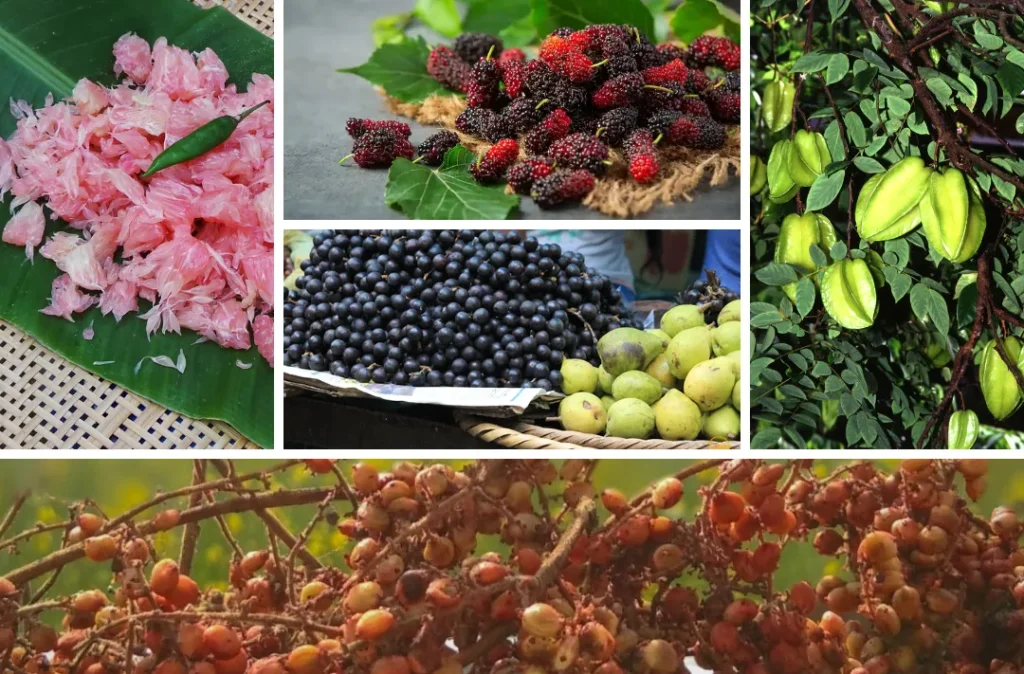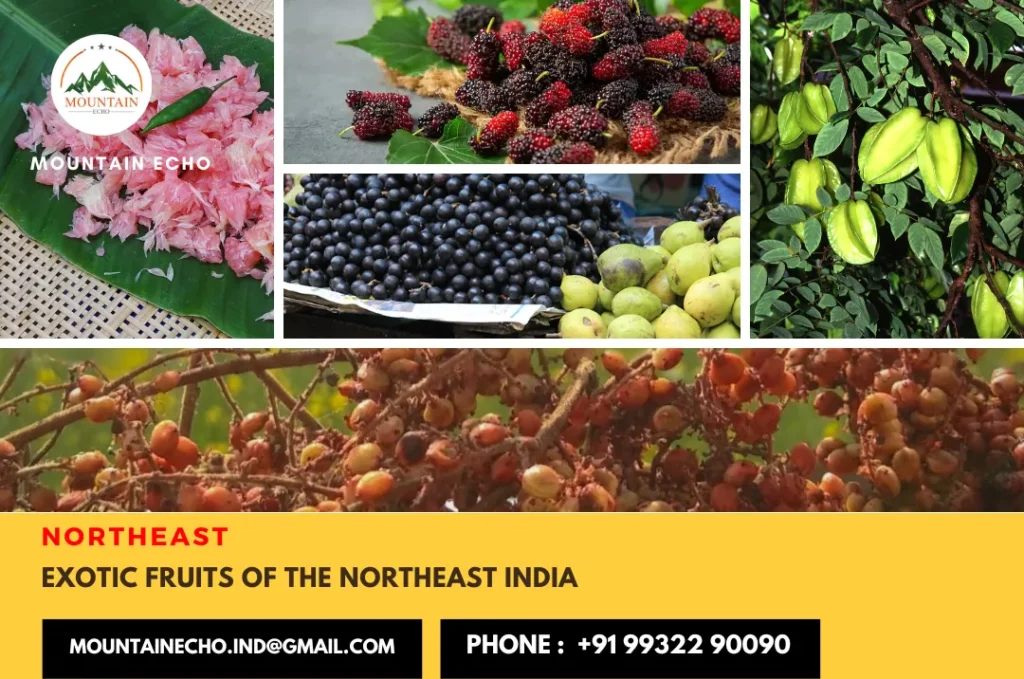Exotic fruits of the Northeast India
Northeast India, a land of diverse cultures and stunning landscapes, is also home to a treasure trove of exotic fruits. From the unique flavors of starfruit to the health benefits of black mulberries, this region has an array of delectable and nutritious offerings. In this article, we will take you on a journey through the exotic fruits of Northeast India, introducing you to their distinctive characteristics, cultural significance, and culinary uses.
Heinoujom (Starfruit/Carambola)
These exotic fruits have small trees and stay green all year. Its branches hang down and its leaves have 5-11 oval-shaped leaflets. The flowers are red-purple and in small groups. It has yellow fruits that are 8-12 cm long, juicy, and have pleasant smell. They’re shaped like ovals and have five sections. People call it “starfruit” because of its shape when cut. The fruit contains 90% water.
Known as heinoujam in Manipur, Starfruit has a unique taste. When it’s green but mature, it’s sour, and when it turns yellow, it becomes sweet. Younger people like to eat the sour green ones as a snack with salt and chili flakes in the evening.
Bhakmilo (Rhus chinesis)
Bhakmilo is a fruit plant found in the Himalayan region and the Northeast of India which grows at elevations between 300 to 1800 meters. It grows in rocky and sandy hills, dry to moist forests, and cultivated farms. People also call it Chinese sumac or Chinese nutgall because it’s native to China. It can grow in both dry and wet areas.
People in Sikkim have used these exotic fruits in traditional medicine for a long time. Bhakmilo has soft stems and green leaves. Its small brown flowers grow in clusters, and its fruits are considered berries because they bunch together. The fruits are small, about 1 cm in size, and the seeds are tiny, only 0.08 cm.

Sohiong (Prunus nepalensis Serr.)
These blackberries are sweet, slightly sour, and soft. They come from Prunus nepalensis Serr. trees in the Rosaceae family. These exotic fruits have tall trees but you can make them shorter by grafting.
Sohiong berries are found in Meghalaya’s temperate regions, especially in Khasi and Jaintia Hills. They are easy to grow, don’t need much care, and can thrive at altitudes from 300 to 2000 meters and temperatures from 2°C to 36°C.
Soh Lyngdkhur (Black mulberry)
A unique sweet black mulberry called Soh Lyngdkhur can be found particularly in the Northeast. Tripura and Meghalaya produce lots of these berries. The plant can grow up to 10 meters tall and has medicinal properties in its bark, leaves, and fruits. Seri culturists use the plant to feed Eri silkworms. Boiling and mashing this fruit can help with throat inflammation and the fruit can also reduce fever.
Robab Tenga (Pomelo)
Robab Tenga – also known as the Pomelo or Shaddock Fruit is found in different parts of the northeastern states. These exotic fruits are a powerhouse of nutrients packed with irresistible delicious taste. Robab Tenga has juicy pink or white inside and its skin is thick and green or yellow. It has big seeds.
The Pomelo trees have oval-shaped green leaves and pretty white flowers with a hint of yellow in the middle. Robab Tenga is rich in copper, fiber, potassium, protein, and carbs. It has a lot of Vitamin C. It’s also known for its antioxidants properties and is good for your heart.



